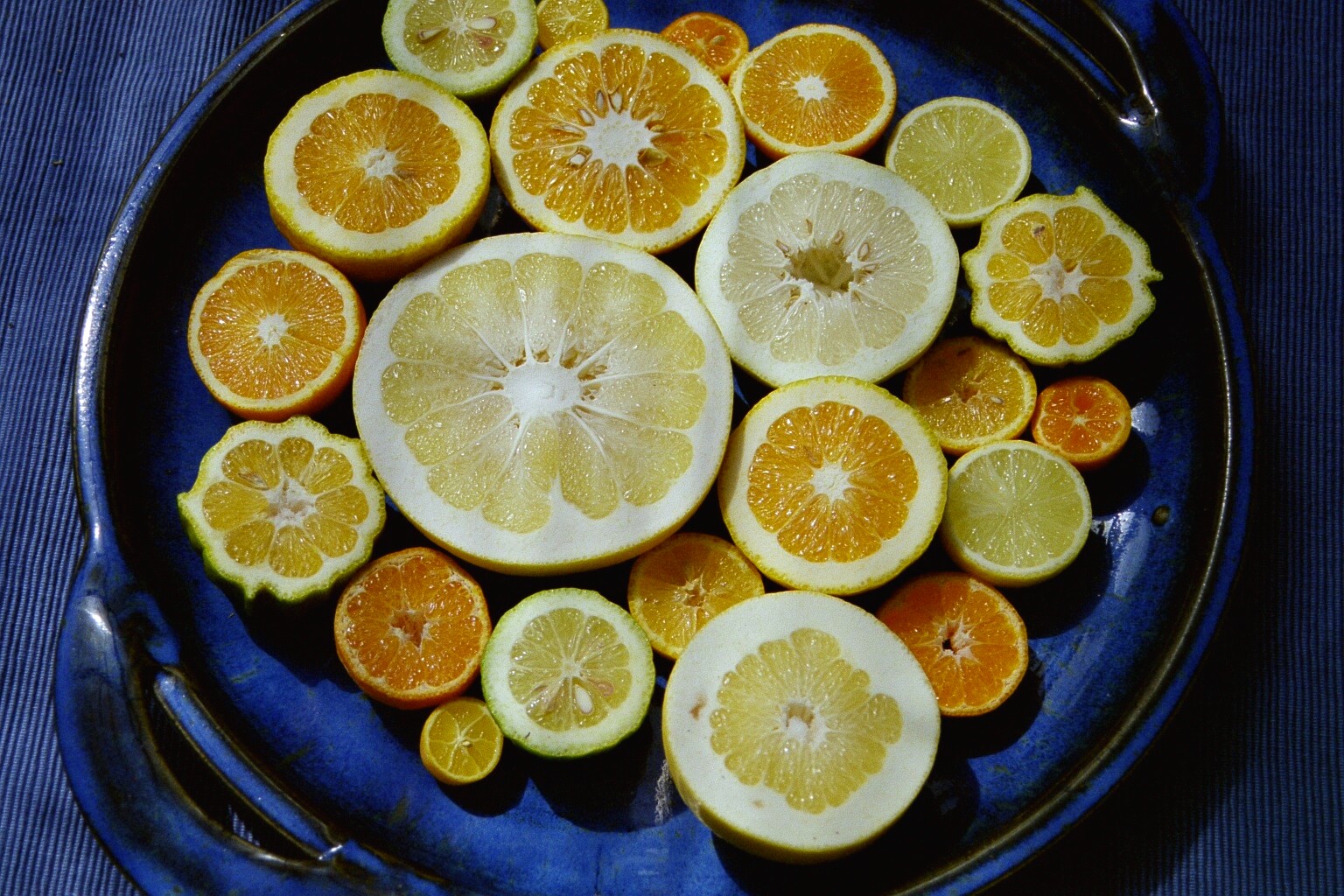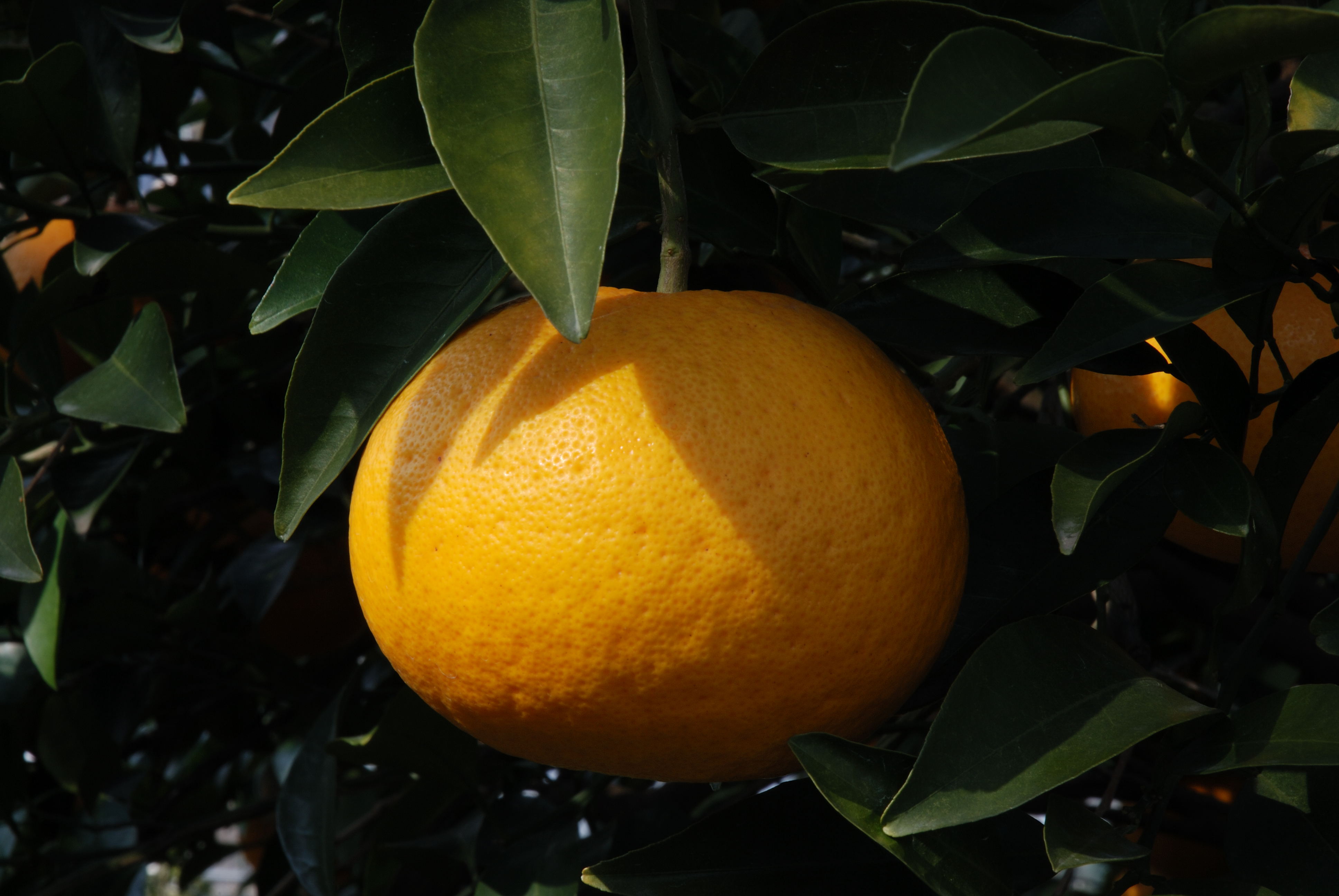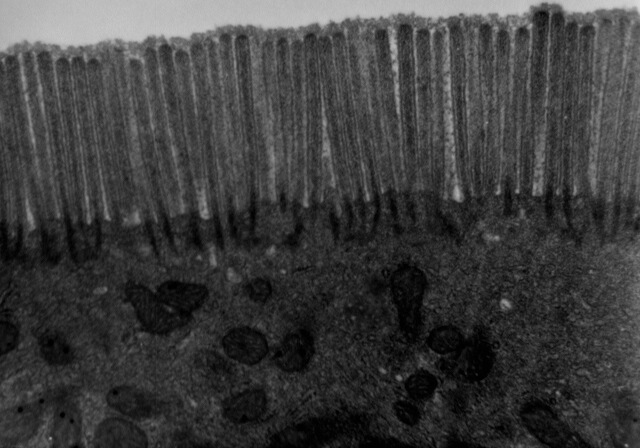|
Kawachi Bankan
Kawachi Bankan (''Citrus kawachiensis''), also called Mishokan and Uwa Gold, is a ''Citrus'' hybrid cultivated for its edible fruit. Genetics Two varieties of Kawachi Bankan have been identified: one, a hybrid between the ujukitsu (seed parent, ''Citrus ujukitsu'') and an unidentified species (pollen parent), and the other, a hybrid between the yuge-hyoukan (seed parent, ''Citrus yuge-hyokan'') and an unidentified species (pollen parent). Distribution It originated and is grown in Japan and is also grown in the United States. Description The Kawachi Bankan was first discovered in Kumamoto Prefecture in 1910. Since the 1980s, the acreage growing this fruit has been increasing. The fruits are large, normally weighing 0.6-1.1 pounds (300-500 grams) and are slightly conical in shape, with most having a nipple at the stem end. They contain few seeds. The rind is thick, somewhat pebbly, and yellow in color; the flesh is also yellow. The flavor is sweet and slightly acidic, and is v ... [...More Info...] [...Related Items...] OR: [Wikipedia] [Google] [Baidu] |
Citrus
''Citrus'' is a genus of flowering plant, flowering trees and shrubs in the rue family, Rutaceae. Plants in the genus produce citrus fruits, including important crops such as Orange (fruit), oranges, Lemon, lemons, grapefruits, pomelos, and lime (fruit), limes. The genus ''Citrus'' is native to South Asia, East Asia, Southeast Asia, Melanesia, and Australia (continent), Australia. Various citrus species have been used and domesticated by indigenous cultures in these areas since ancient times. From there its cultivation spread into Micronesia and Polynesia by the Austronesian expansion (c. 3000–1500 BCE); and to the Middle East and the Mediterranean (c. 1200 BCE) via the incense trade route, and onwards to Europe and the Americas. History Citrus plants are native to subtropical and tropical regions of Asia, Island Southeast Asia, Near Oceania, and northeastern Australia. Domestication of citrus species involved much hybridization and introgression, leaving much uncertainty ab ... [...More Info...] [...Related Items...] OR: [Wikipedia] [Google] [Baidu] |
Hyperphosphorylation
Hyperphosphorylation occurs when a biochemical with multiple phosphorylation sites is fully saturated. Hyperphosphorylation is one of the signaling mechanisms used by the cell to regulate mitosis. When these mechanisms fail, developmental problems or cancer are a likely outcome. The mechanism appears to be largely conserved throughout eukaryote species. The dynamics of mitosis are similar to a state machine. In a healthy cell, checkpoints between phases permit a new phase to begin only when the previous phase is complete and successful. At these checkpoints, gatekeeper molecules block or allow events, depending on their level of phosphorylation. Kinases are responsible for adding phosphate groups and phosphatases for removing them. Cyclins are molecules that manage the timing of cell cycle events. Cyclin dependent kinases pair up with cyclins to become operational. Cyclins are named because they are created or destroyed at predetermined points within the cell cycle. Kinase inhi ... [...More Info...] [...Related Items...] OR: [Wikipedia] [Google] [Baidu] |
Edible Fruits
An edible item is any item that is safe for humans to eat. "Edible" is differentiated from "eatable" because it does not indicate how an item tastes, only whether it is fit to be eaten. Nonpoisonous items found in nature – such as some mushrooms, insects, seaweed, and so forth – are referred to as edible. Processed items that normally are not ingested but are specially manufactured to be so, like edible underwear or edible packaging, are also labeled as edible. Edible items in nature It is estimated that approximately half of about 400,000 plant species on earth are edible, yet ''Homo sapiens'' consume only about 200 plant species, because these are the simplest to domesticate. Edible plants found in nature include certain types of mushrooms, flowers, seeds, berries, seaweed, and cacti. Being able to identify the versions of these plants that are safe to eat is an important survival skill. Many animals are also edible, including domesticated livestock as well as wild insec ... [...More Info...] [...Related Items...] OR: [Wikipedia] [Google] [Baidu] |
Fruit Trees
A fruit tree is a tree which bears fruit that is consumed or used by animals and humans — all trees that are flowering plants produce fruit, which are the ripened ovaries of flowers containing one or more seeds. In horticultural usage, the term "fruit tree" is limited to those that provide fruit for human food. Types of fruits are described and defined elsewhere (see Fruit), but would include "fruit" in a culinary sense, as well as some nut-bearing trees, such as walnuts. The scientific study and the cultivation of fruits is called pomology, which divides fruits into groups based on plant morphology and anatomy. Some of those groups are pome fruits, which include apples and pears, and stone fruits, which include peaches/nectarines, almonds, apricots, plums and cherries. Examples of fruit trees * Abiu * Almond * Amla (Indian gooseberry) * Apple * Apricot * Avocado * Bael * Ber (Indian plum) * Carambola (starfruit) * Cashew * Cherry * Citrus (orange, lemon, lime, etc.) * ... [...More Info...] [...Related Items...] OR: [Wikipedia] [Google] [Baidu] |
Citrus Hybrids
Citrus taxonomy refers to the botanical classification of the species, varieties, cultivars, and graft hybrids within the genus ''Citrus'' and related genera, found in cultivation and in the wild. Citrus taxonomy is complex and controversial. Cultivated citrus are derived from various citrus species found in the wild. Some are only selections of the original wild types, many others are hybrids between two or more original species, and some are backcrossed hybrids between a hybrid and one of the hybrid's parent species. Citrus plants hybridize easily between species with completely different morphologies, and similar-looking citrus fruits may have quite different ancestries. Some differ only in disease resistance. Conversely, different-looking varieties may be nearly genetically identical, and differ only by a bud mutation. Detailed genomic analysis of wild and domesticated citrus cultivars has suggested that the progenitor of modern citrus species expanded out of the Himalaya ... [...More Info...] [...Related Items...] OR: [Wikipedia] [Google] [Baidu] |
Japanese Citrus
A number of citrus fruits are grown in or strongly associated with Japan. Many of these fruits are of Chinese origin, but have been modified or specially bred for cultivation in Japan. Japanese taxonomy Japan usually follows the botanical names of the taxonomy from Tyôzaburô Tanaka, often referred to as the "Tanaka system", giving for each cultivar a separate name no matter if it is pure or a hybrid of two or more species or varieties. While elsewhere it is more popular to classify the genus citrus into species, and further into varieties, and then into cultivars or hybrid. Such a system was created by Walter Tennyson Swingle from Florida and is called the "Swingle system". The different approaches of the two systems lead to partially-overlapping or nested 'species', for example, ''Citrus unshiu'' and ''Citrus tangerina'' (Tanaka) versus ''Citrus reticulata'' (Swingle). Likewise, common terms, like "mikan", do not always align with these taxonomic groups. Japanese citrus (pa ... [...More Info...] [...Related Items...] OR: [Wikipedia] [Google] [Baidu] |
List Of Citrus Fruits
This is a list of citrus fruits: Hybrid Citron Papeda See also * List of lemon dishes and drinks This is a list of lemon dishes and drinks, in which lemon is used as a primary ingredient. Lemon is a small evergreen tree native to Asia, and the tree's ellipsoidal yellow fruit. The fruit is used for culinary and non-culinary purposes throughou ... External links"The Citrus Family Tree" ''National Geographic'' {{DEFAULTSORT:Citrus Fruits, List Of * Lists of foods Lists of plants ... [...More Info...] [...Related Items...] OR: [Wikipedia] [Google] [Baidu] |
Hi-Chew
is a Japanese fruit candy sold by Morinaga & Company. Origin Hi-Chew candy was first released in 1975. It was re-released in the packaging of individually wrapped candies in February 1996. The origins of Hi-Chew began when Taichiro Morinaga sought to create an edible kind of chewing gum that could be swallowed because of the Japanese cultural taboo against taking food out of one's mouth. Morinaga already produced caramel. By combining his chewy caramel with flavoring, Morinaga was able to create his new candy called Chewlets in 1931. Morinaga, whose business was hampered immensely by World War II, had to rebuild his company from scratch, and Chewlets were reintroduced in the form of Hi-Chews, as they are known today. Description Hi-Chew candies are individually wrapped in logo-stamped foil or plain white wax paper (depending on the localization). Each individual candy piece consists of an outer white coating (this is the same for most flavors) and a colored, flavored interi ... [...More Info...] [...Related Items...] OR: [Wikipedia] [Google] [Baidu] |
Colitis
Colitis is swelling or inflammation of the large intestine ( colon). Colitis may be acute and self-limited or long-term. It broadly fits into the category of digestive diseases. In a medical context, the label ''colitis'' (without qualification) is used if: * The cause of the inflammation in the colon is undetermined; for example, ''colitis'' may be applied to ''Crohn's disease'' at a time when the diagnosis is unknown, or * The context is clear; for example, an individual with ulcerative colitis is talking about their disease with a physician who knows the diagnosis. Signs and symptoms The signs and symptoms of colitis are quite variable and dependent on the cause of the given colitis and factors that modify its course and severity. Common symptoms of colitis may include: mild to severe abdominal pains and tenderness (depending on the stage of the disease), persistent hemorrhagic diarrhea with pus either present or absent in the stools, fecal incontinence, flatulence, fatigu ... [...More Info...] [...Related Items...] OR: [Wikipedia] [Google] [Baidu] |
Intestinal Epithelium
The intestinal epithelium is the single cell layer that form the luminal surface (lining) of both the small and large intestine (colon) of the gastrointestinal tract. Composed of simple columnar epithelial cells, it serves two main functions: absorbing useful substances into the body and restricting the entry of harmful substances. As part of its protective role, the intestinal epithelium forms an important component of the intestinal mucosal barrier. Certain diseases and conditions are caused by functional defects in the intestinal epithelium. On the other hand, various diseases and conditions can lead to its dysfunction which, in turn, can lead to further complications. Structure The intestinal epithelium is part of the intestinal mucosa. The epithelium is composed of a single layer of cells, while the other two layers of the mucosa, the lamina propria and the muscularis mucosae, support and articulate the epithelial layer. To securely contain the contents of the intes ... [...More Info...] [...Related Items...] OR: [Wikipedia] [Google] [Baidu] |
Cytokine
Cytokines are a broad and loose category of small proteins (~5–25 kDa) important in cell signaling. Cytokines are peptides and cannot cross the lipid bilayer of cells to enter the cytoplasm. Cytokines have been shown to be involved in autocrine, paracrine and endocrine signaling as immunomodulating agents. Cytokines include chemokines, interferons, interleukins, lymphokines, and tumour necrosis factors, but generally not hormones or growth factors (despite some overlap in the terminology). Cytokines are produced by a broad range of cells, including immune cells like macrophages, B lymphocytes, T lymphocytes and mast cells, as well as endothelial cells, fibroblasts, and various stromal cells; a given cytokine may be produced by more than one type of cell. They act through cell surface receptors and are especially important in the immune system; cytokines modulate the balance between humoral and cell-based immune responses, and they regulate the maturation, growth, and res ... [...More Info...] [...Related Items...] OR: [Wikipedia] [Google] [Baidu] |
Dextran Sulfate Sodium
Dextran is a complex branched glucan (polysaccharide derived from the condensation of glucose), originally derived from wine. IUPAC defines dextrans as "Branched poly-α-d-glucosides of microbial origin having glycosidic bonds predominantly C-1 → C-6". Dextran chains are of varying lengths (from 3 to 2000 kilodaltons). The polymer main chain consists of α-1,6 glycosidic linkages between glucose monomers, with branches from α-1,3 linkages. This characteristic branching distinguishes a dextran from a dextrin, which is a straight chain glucose polymer tethered by α-1,4 or α-1,6 linkages. Occurrence Dextran was discovered by Louis Pasteur as a microbial product in wine, but mass production was only possible after the development by Allene Jeanes of a process using bacteria. Dental plaque is rich in dextrans. Dextran is a complicating contaminant in the refining of sugar because it elevates the viscosity of sucrose solutions and fouls plumbing. Dextran is now produced from ... [...More Info...] [...Related Items...] OR: [Wikipedia] [Google] [Baidu] |






